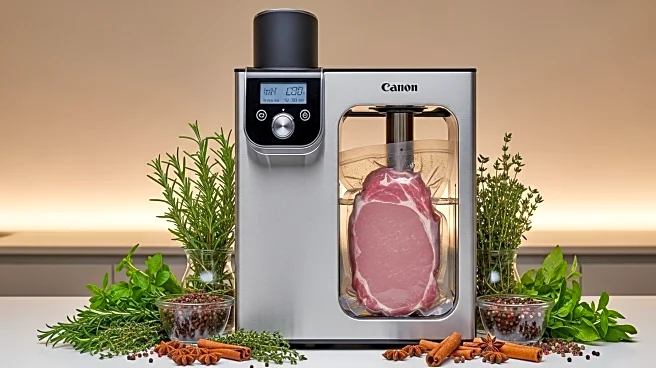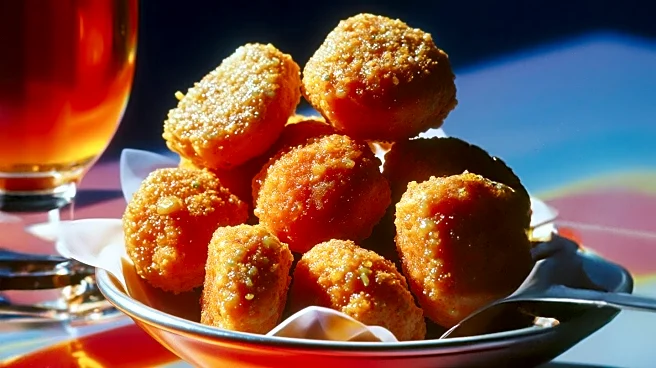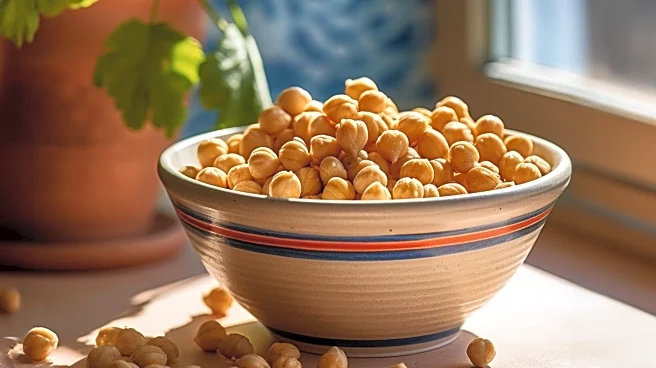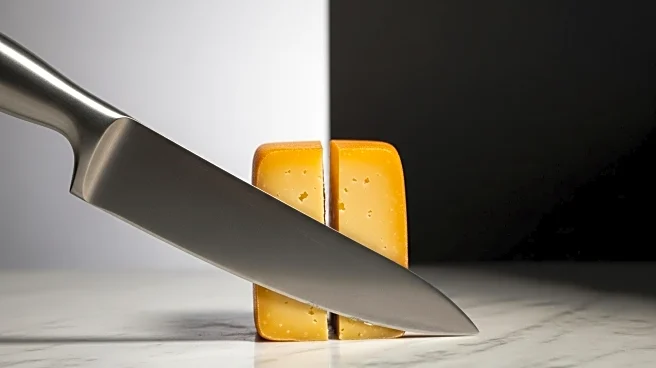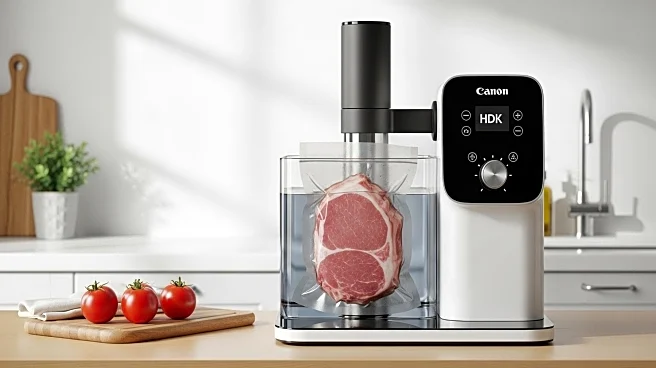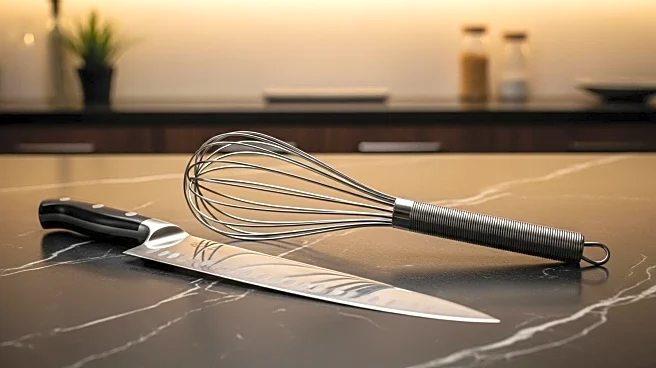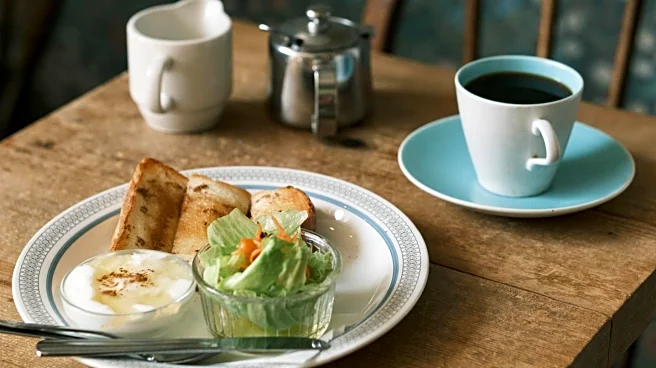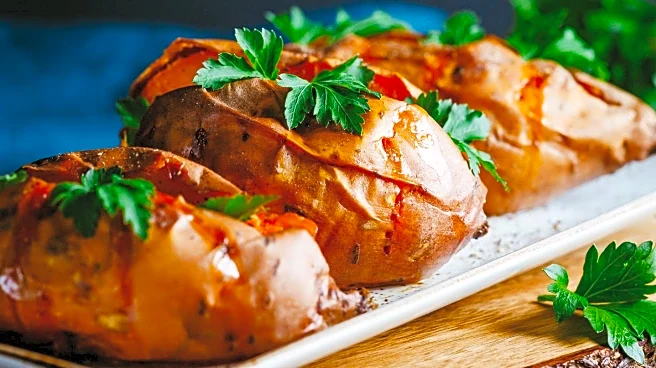What's Happening?
A recent study has examined the effects of low-temperature sous vide cooking under high pressure on pork loins, focusing on moisture retention, tenderness, and color. The research highlights how high-pressure (HP) treatment can modify the thermal stability of meat proteins, potentially improving the eating quality of pork loin. The study found that sous vide cooking under HP can reduce cooking loss and enhance tenderness compared to conventional cooking methods. The findings suggest that HP treatment stabilizes protein structures, leading to better water retention and improved texture. The study also noted that sous vide cooking under HP resulted in a rare-like appearance, which could positively influence consumer preference.
Why It's Important?
The study's findings have significant implications for the food industry, particularly in enhancing the quality of lean meats like pork loin. By reducing cooking loss and improving tenderness, sous vide cooking under HP could increase consumer acceptance and market value for pork products. The technique offers a promising alternative to conventional cooking methods, potentially leading to new culinary innovations and improved meat processing techniques. Additionally, the ability to offer pork at different degrees of doneness while ensuring safety could expand culinary options and consumer choices.
What's Next?
Further research is needed to develop pilot-scale systems for industrial application of sous vide cooking under HP. The study suggests that recent advancements in HP technology could support its potential as an upcycling technology for various underutilized pork cuts. The food industry may explore the integration of this technique into commercial meat processing, potentially leading to new product offerings and enhanced meat quality standards.
Beyond the Headlines
The study highlights the potential for sous vide cooking under HP to transform meat processing by improving textural properties and water retention. This could lead to long-term shifts in consumer preferences and culinary practices, emphasizing the importance of innovative cooking techniques in enhancing food quality.
